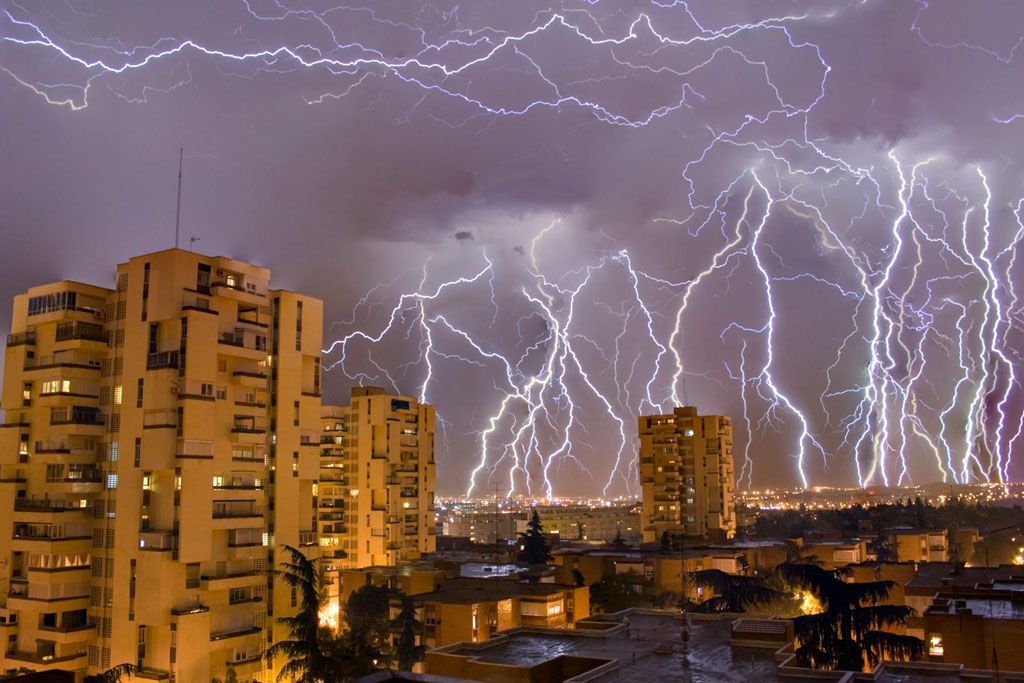
Is your workplace prepared for severe weather and natural disasters? This year has brought record-breaking heat, catastrophic flooding, wildfires, severe storms, and other major events. Our thoughts are with those affected by Hurricane Helene.
When severe weather strikes, you may have very little time to act. Communication with employees won’t be timely and may not even be possible. Commuting to and from the worksite and the worksite itself might be unsafe.
You need a plan, and your employees need to be trained to follow it — whether they work on-site, at home, or elsewhere.
1. Drafting a Severe Weather Plan
Start by identifying the potential risks inherent to your business and geography and how each disaster might cause disruptions to your business. These could include impassable roads, utility failures, unsafe working conditions, employee displacement, or physical destruction of your facilities. Explain applicable safety measures for each risk and provide relevant information (maps, evacuation routes, safe zones, etc.). Try to build reasonable contingencies for power failures, understanding that they may last for hours, days, or weeks. The plan should also delineate roles and responsibilities so employees know whom to contact for questions and further instructions.
2. Communication
Consider what alternative means of communication may be operable in these situations. In some cases, you might need to post information to a central location or system so that employees can connect when their service is restored. Some examples include:
- Web pages or voice recordings that can be updated by a key employee with access to phones or internet
- Software that automatically sends text messages, emails, or voice mails to your entire staff to notify them of updates
If none of those are feasible for your business, instruct employees on what work and safety procedures they should follow when communication is limited or impossible.
Your communication with employees should also include their travel options if their work must be done on-site. Conditions will not be the same everywhere. Roads may be impassable, and power may be out on one side of the city but not the other.
3. Flexibility
Even if you have a no-call, no-show termination policy you usually follow, provide as much flexibility as possible during severe weather or natural disasters. Your attendance policy should allow management discretion in emergencies so you have more leeway to make exceptions to your rules. When deciding how to respond to absences after a storm or during extreme weather conditions, consider employee morale and your reputation in the larger community.
Employees may be able to commute to work following severe weather but may be hesitant due to safety concerns. In such cases, take an empathetic approach. Ask them if they feel safe traveling, listen to any concerns, and work with them to find a solution. That may mean allowing them to work from home or enabling them to take time off per your policy. It could also mean reevaluating your business hours during the crisis.
4. Severe Weather Closures and Pay
If you decide to close due to inclement weather, nonexempt employees only need to be paid for hours worked. In these situations, employers generally allow the use of vacation or paid time off (PTO) if nonexempt employees have it available.
Most exempt employees must be paid their regular salary when the company closes due to inclement weather. This holds whether the office closure is for full or partial days unless the employee does no work for an entire workweek. You can, however, require exempt employees to use accrued vacation or PTO during a closure if you have a policy stating that or if doing so has been your practice in the past.
5. Additional Support
When weather becomes so severe that employees must evacuate their homes, consider offering to cover hotel and travel costs. For example, a policy might state that any employee whose household is affected by a natural disaster that triggers an emergency declaration by local or state officials is eligible to receive a credit for up to a certain number of nights of lodging or a certain dollar amount. Lifting some of the financial burden can help them get where they need to go and stay safe. Crisis benefits are an investment in their safety and success.
After a severe weather incident or natural disaster, your employees may seek opportunities to help others in their community or elsewhere. Consider organizing a donation drive, sponsoring an event, or providing employees with PTO for volunteer work.
The Right HCM Platform for Severe Weather Adjustments
If you need to make changes to schedules and pay and ensure communications get through to your employees during severe weather events, you need an HCM platform to make those changes and get the messages out easily. isolved, GTM’s HCM platform gives your employees 24/7 access from any device to see alerts, request time off, view pay stubs, and much more. Your managers can also easily make time scheduling adjustments, view time off requests, update pay rates, and much more. Fill out the brief form below to learn more, or request a free quote today.

